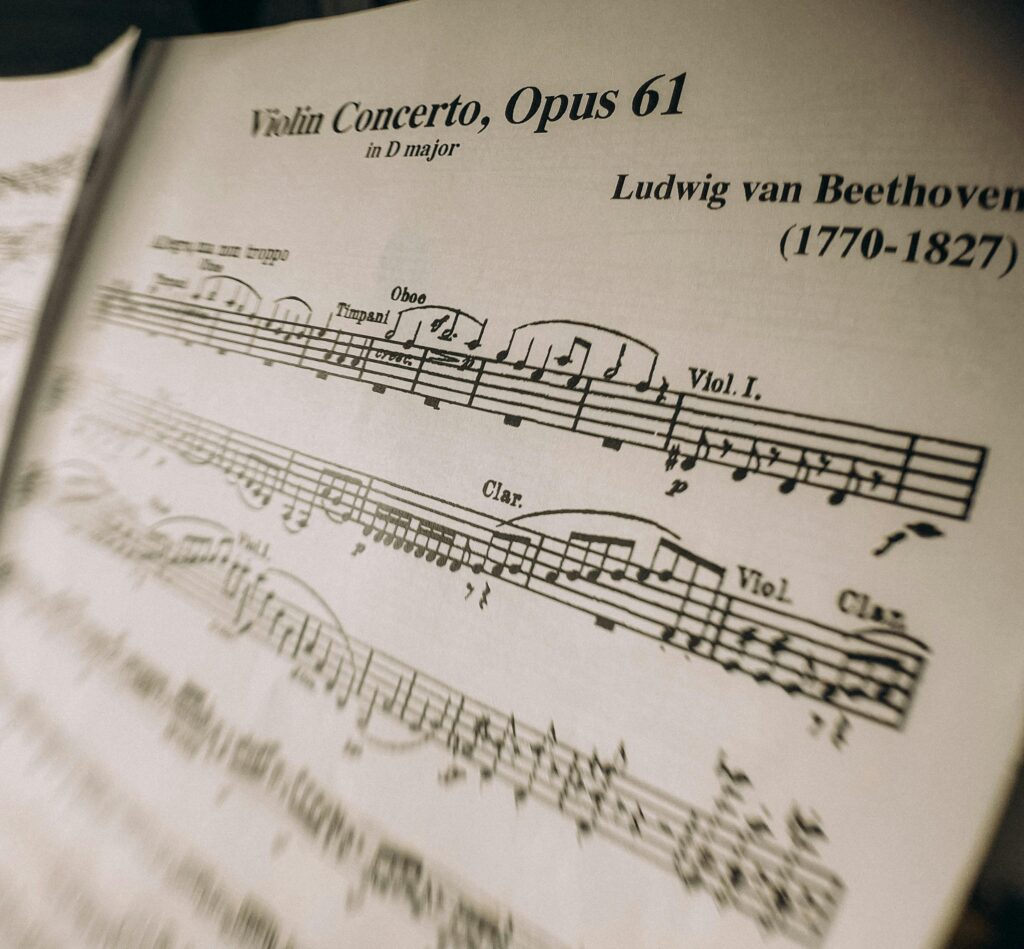Music theory often feels like a treasure hunt, uncovering new gems that can transform your playing and composing. Today’s focus is quartal, quintal and secundal harmonies. Let’s explore these three fascinating ways to build chords that break away from western traditional norms.
Whether you’re a seasoned pianist or just starting out, understanding these harmonies can open up fresh sonic possibilities. Let’s dive into what these harmonies are, how they’re built, and why they matter.
- Fall in love with the music - Learn your favorite songs, at a level suitable for you.
- Enjoy interactive piano lessons - Explore courses covering music theory, technique chords & more.
- Get real-time feedback - Skoove's feedback tells you what went well and what needs practice.

Why explore other forms of harmony?
These non-traditional harmonies can:
- Add fresh colors to your compositions.
- Inspire new ways to approach improvisation.
- Help you break free from traditional patterns.
Learning about quartal, quintal, and secundal harmonies isn’t just an academic exercise, it’s a gateway to creativity.
Understanding traditional harmony
Before diving into quartal, quintal and secundal harmonies, let’s quickly recap the fundamentals of traditional harmony. Most Western music is built on tertian harmony, which constructs chords by stacking intervals of thirds.
Think of a C major chord: it’s built from the notes C, E, and G. Each note is a third above the previous one.
Here’s how examples of tertian chords stack up:
| Chord Type | Intervals | Example (C Root) |
|---|---|---|
| Major triad | Root + major 3rd + perfect 5th | C, E, G |
| Minor triad | Root + minor 3rd + perfect 5th | C, E♭, G |
| Dominant seventh | Root + major 3rd + minor 7th | C, E, G, B♭ |
Tertian harmony’s predictable structure is beautiful, but quartal, quintal and secundal subvert standard practice for something entirely different.
What is quartal harmony?
Quartal harmony is a way of building piano chords by stacking intervals of fourths rather than the traditional thirds found in Western classical music. The fourth spans five semitones, for instance, from C to F. This method produces an open and interesting sound.
The origins of quartal harmony
Quartal harmony originated from a reevaluation of tonal norms in the late 19th and early 20th centuries. While fourths were consonant in medieval music, they came to be considered dissonant or context-dependent during the common practice period. In the late 20th century, as tonality was reconsidered and broken down, composers like Debussy, Scriabin and Berg used fourth-based structures to explore new harmonic possibilities, influencing modern classical. Jazz music also incorporated this with the likes of Mcoy Tyner and Bill Evans adopting quartal approaches to harmony.
Interestingly, the concept of building harmonies with fourths isn’t exclusive to Western music. Some traditional African and Asian music systems inherently use fourths, offering a unique parallel to western quartal harmony.
Building quartal harmony chords
Creating quartal chords is straightforward, but the results can feel endlessly inventive.
True quartal harmony: stacked perfect fourths
True quartal harmony is created by stacking perfect fourths above a root note, producing a unique, open sound distinct from traditional tertian (third-based) chords. Here’s how to build one:
Start with a root note.
Example: Begin with C.
- Add a perfect fourth above the root: This gives you F (five semitones above C).
- Add another perfect fourth above: Next comes B♭ (five semitones above F).
This results in the pure quartal chord C–F–B♭.
Variations to try
- Extended quartal chords: Add more fourths, such as E♭ or A♭, to create a layered, complex harmony.
- Inversions: Rearrange the order of the notes, such as F–B♭–C, for different tonal effects.
- Open voicings: Space the notes across octaves for a broader, richer sound.
Diatonic quartal harmony
Diatonic quartal harmony adapts quartal structures to fit within a specific scale or mode. Each interval remains a fourth within the context of the scale. Let’s look at how to build diatonic quartal chords
- Choose a scale – Example: The Dorian scale (D–E–F–G–A–B–C).
- Stack fourths diatonically.
- Start with D.
- Add G (a fourth above D within the scale).
- Add C (a fourth above G within the scale).
This creates a diatonic quartal chord D–G–C in Dorian mode.
As with true quartal harmony you can always add extensions on to three note chords.
Examples in modal jazz
Diatonic quartal harmony is central to modal jazz, especially in the work of McCoy Tyner and John Coltrane. Try these voicings in Dorian mode:
- D–G–C over D minor
- E–A–D over E minor
- F–B–E over F major
Diatonic quartal chords lend a modern, fluid texture to progressions, making them ideal for improvisation and modal exploration.
What is quintal harmony?
Quintal harmony is created through building chords from intervals of fifths. A fifth spans seven semitones for example, C to G. The result is a spacious, ringing quality that evokes a sense of grandeur.
Why quintal harmony feels different
Quintal harmony is often described as “open” because of the wide intervals between the notes. Unlike tertian chords, which resolve neatly, quintal chords float, creating a sense of timelessness. This makes them perfect for music that aims to convey vastness, such as film scores or minimalist compositions.
Building quintal harmony chords
Quintal harmony chords are built by stacking fifth intervals, creating a unique, open, and resonant sound.
True quintal harmony: stacked perfect fifths
- Start with a root note – Example: Begin with C.
- Add a perfect fifth above the root. This gives you G (seven semitones above C).
- Add another perfect fifth above. Next comes D (seven semitones above G).
This results in the pure quintal chord C–G–D.
Variations to try
- Extended quintal chords: Add more fifths, such as A or E, to expand the harmony further.
- Inversions: Rearrange the notes, like G–D–C, for a new texture.
- Open voicings: Spread the notes across multiple octaves to amplify the harmonic depth.
Diatonic quintal harmony
Diatonic quintal harmony adapts the quintal structure to fit within a chosen scale or mode, maintaining the intervals within the context of that scale.
Building diatonic quintal chords
1. Choose a scale – Example: The Mixolydian scale (G–A–B–C–D–E–F).
2. Stack fifths diatonically.
- Start with G.
- Add D (a fifth above G within the scale).
- Add A (a fifth above D within the scale).
This creates a diatonic quintal chord G–D–A in Mixolydian mode.
Examples in film and contemporary music
Quintal harmony is often used to create a vast, open feel in modern compositions, particularly in film scores. Try these voicings in Mixolydian mode:
- G–D–A over G major
- A–E–B over A minor
- C–G–D over C major
Diatonic quintal chords provide a grounded yet ethereal quality, making them ideal for both tension and resolution in harmonic progressions.
What is secundal harmony?
Secundal harmony stacks intervals of seconds, either diatonic (like C to D) or chromatic (like C to C♯). The resulting sound is dense, dissonant and cluster-like, making it a favorite in avant-garde and experimental music.
The unique sound of seconds
Unlike fourths and fifths, which sound open, seconds are compact and clashing. This gives secundal harmony its tension-filled, “crunchy” quality. It’s often used to create suspense or moments of unease.
Building secundal harmony chords
- Start with a root note – Example: Begin with C.
- Add a second above the root: This gives you D (two semitones above C).
- Add another second above: Next comes E (two semitones above D).
This forms the pure secundal chord C–D–E.
Variations to Explore
- Extended clusters: Add more seconds, such as F or G, for thicker textures.
- Chromatic clusters: Use adjacent notes (e.g., C–C♯–D) to create sharper dissonance.
- Inversions: Rearrange notes, such as E–C–D, for unique tonal effects.
Diatonic secundal harmony
Diatonic secundal harmony adjusts the stacked seconds to fit within a specific scale, resulting in clusters that feel consonant within the chosen key.
Building diatonic secundal chords
- Choose a scale – Example: The Dorian scale (D–E–F–G–A–B–C).
- Stack seconds diatonically.
- Start with D.
- Add E (a second above D within the scale).
- Add F (a second above E within the scale).
This creates the diatonic secundal chord D–E–F in Dorian mode.
Examples in contemporary music
Secundal harmony adds a modern, avant-garde touch to music and can evoke emotional tension or atmospheric depth. Try these clusters in Dorian mode:
- D–E–F over D minor
- F–G–A over F major
- A–B–C over A minor
Diatonic secundal clusters work well in both static textures and dynamic progressions, offering a balance of dissonance and consonance that’s perfect for expressive, boundary-pushing compositions.
Comparing quartal, quintal, and secundal harmonies
Here’s a quick comparison of these three harmony types:
| Harmony Type | Interval (non diatonic) | Sound | Usage |
|---|---|---|---|
| Quartal | Fourths (5 semitones) | Open, airy, modern | Jazz, modal music |
| Quintal | Fifths (7 semitones) | Spacious, cinematic | Film scores, modern classical |
| Secundal | Seconds (1–2 semitones) | Dense, dissonant | Avant-garde, tension in pop |
Who uses quartal quintal and secundal harmony?
Discovering all these new harmonic devices can be a bit daunting. Exploring the sounds they make and feelings they evoke will help you understand and incorporate them into your playing and writing.
Quartal harmony
- McCoy Tyner – Known for his use of quartal harmony in modal jazz, particularly in his work with John Coltrane.
- Claude Debussy – Used quartal harmony in his impressionistic works, such as in “Voiles” and “Des pas sur la neige.”
- Arnold Schoenberg – Known for his early 20th-century exploration of quartal structures as part of his broader harmonic experimentation.
Quintal harmony
- Miles Davis – In his modal works, Davis embraced quintal harmonies, especially in albums like Sketches of Spain.
- Wayne Shorter – Incorporates quintal harmonic ideas in both his own compositions and his work with the Miles Davis Quintet.
- Aaron Copland – Used quintal harmony in many of his orchestral works, often contributing to a sense of vastness or openness.
Secundal harmony
- Jacob Collier – A modern master of secundal harmony, frequently using stacked seconds in his arrangements and improvisations.
- Alban Berg – Used clusters and secundal harmonies as part of his atonal style, particularly in his opera Lulu and string quartets.
- György Ligeti – Known for his avant-garde approach to harmony, Ligeti often employed clusters of seconds, creating a dense and disorienting texture.
Practical applications for pianists
Now that you know how these harmonies work, how can you use them in your playing? Let’s explore some practical tips.
Quartal harmony exercises
- Play a series of quartal chords in the key of C major: C–F–B♭, D–G–C, E–A–D.
- Try improvising over a modal progression (e.g. Dorian mode) using quartal voicings.
Quintal harmony exercises
- Create a progression using quintal chords: C–G–D, G–D–A, A–E–B.
- Experiment with wide voicings to create cinematic sounds.
Secundal harmony exercises
- Build chromatic clusters like C–C♯–D and move them up the keyboard.
- Use secundal chords to create tension in a piece, resolving to a traditional chord for contrast.
It’s best to integrate these new forms of harmony by playing them with the right guidance. Joe Hisaishi, the composer for many Studio Ghibli soundtracks make use of quartal voicings. You can find a tutorial on how to play his beautiful composition, Innocent , from Castle in the Sky over on the Skoove app.
Make your own progressions
The charm of these harmonic devices is that quartal, quintal and secundal harmonies break away from traditional tertian rules. These approaches focus on the movement of intervals fourths, fifths and seconds allowing for more open, expansive, or dissonant sounds.
Chord progressions using quartal harmony have a modern, spacious feel, while quintal progressions evoke a cinematic or airy quality. Secundal progressions, on the other hand, create tension and density, perfect for avant-garde or experimental textures. The beauty of these harmonies lies in their flexibility to experiment with stacking intervals, rearranging notes, and exploring sounds to discover unique progressions that reflect your own musical voice. Have fun and experiment!
Tips for success with quartal, quintal, and secundal harmonies
Mastering quartal, quintal, and secundal harmonies takes time, patience and a structured approach. These harmonies might feel unfamiliar at first, but with focused practice and the right tools, you can incorporate them into your music.
Start simple and build gradually: Focus on one harmony type, like quartal chords, before branching out. Play these over a single root note to familiarize yourself with their sound. Gradually apply them to scales and progressions, transitioning between harmony types to explore their interactions.
Experiment with modes and scales:
- Quartal & Quintal Harmonies: Pair with modal scales (e.g., Dorian, Mixolydian, Lydian) for unique voicings. Try quartal chords (D–G–C) over Dorian or quintal chords (G–D–A) over Mixolydian.
- Secundal Harmonies: Use diatonic clusters (C–D–E) for smoother textures or chromatic clusters (C–C♯–D) for added tension.
Incorporate into practice: Dedicate exercises to each type:
- Play quartal chords in different keys.
- Explore quintal chords with open voicings for cinematic effects.
- Practice ascending and descending secundal clusters.
- Combine techniques in improvisation, like quartal chords in the left hand with modal melodies in the right.
Learn from the masters: Check out all the examples shown above and learn about these harmonic devices from the masters.
Conclusion
Exploring quartal, quintal, and secundal harmonies can transform your music, offering fresh sounds and endless creative possibilities. These harmonies break away from traditional structures, making them ideal for everything from jazz improvisation to modern classical compositions and film scores. Start experimenting today and unlock new musical dimensions!
Skoove’s interactive lessons and real-time feedback help you practice quartal, quintal and secundal chords while exploring modal scales, unique progressions and improvisation. With visual and audio guidance, Skoove makes it easy to understand these harmonies in a broader musical context, supporting players of all levels. Happy practicing!
Author of this blog post:
Susana Pérez Posada

With over seven years of piano education and a deep passion for music therapy, Susana brings a unique blend of expertise to Skoove. A graduate in Music Therapy from SRH Hochschule Heidelberg and an experienced classical pianist from Universidad EAFIT, she infuses her teaching with a holistic approach that transcends traditional piano lessons. Susana’s writings for Skoove combine her rich musical knowledge with engaging storytelling, enriching the learning experience for pianists of all levels. Away from the piano, she loves exploring new places and immersing herself in a good book, believing these diverse experiences enhance her creative teaching style.
Published by Lydia Ogn from the Skoove team














